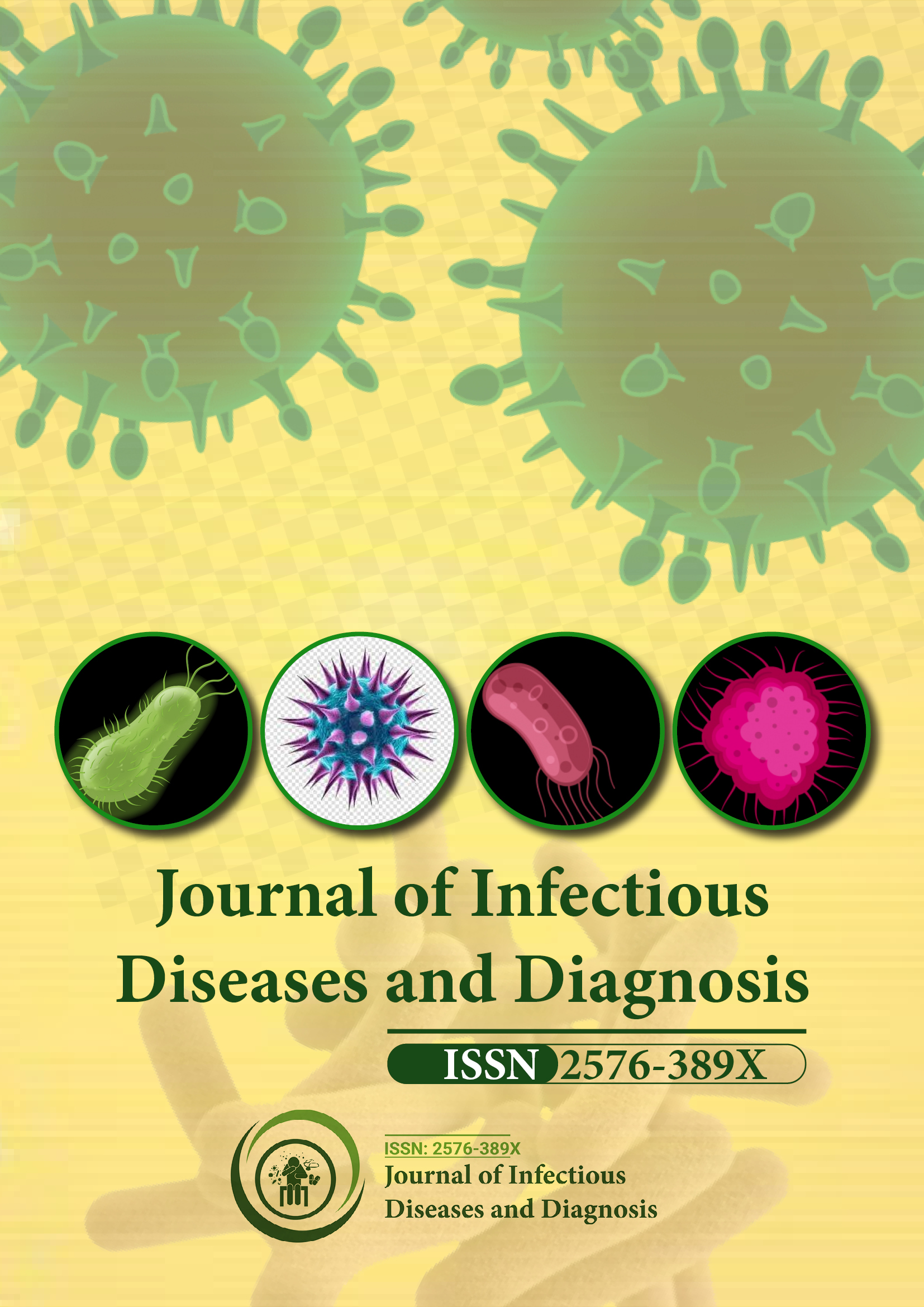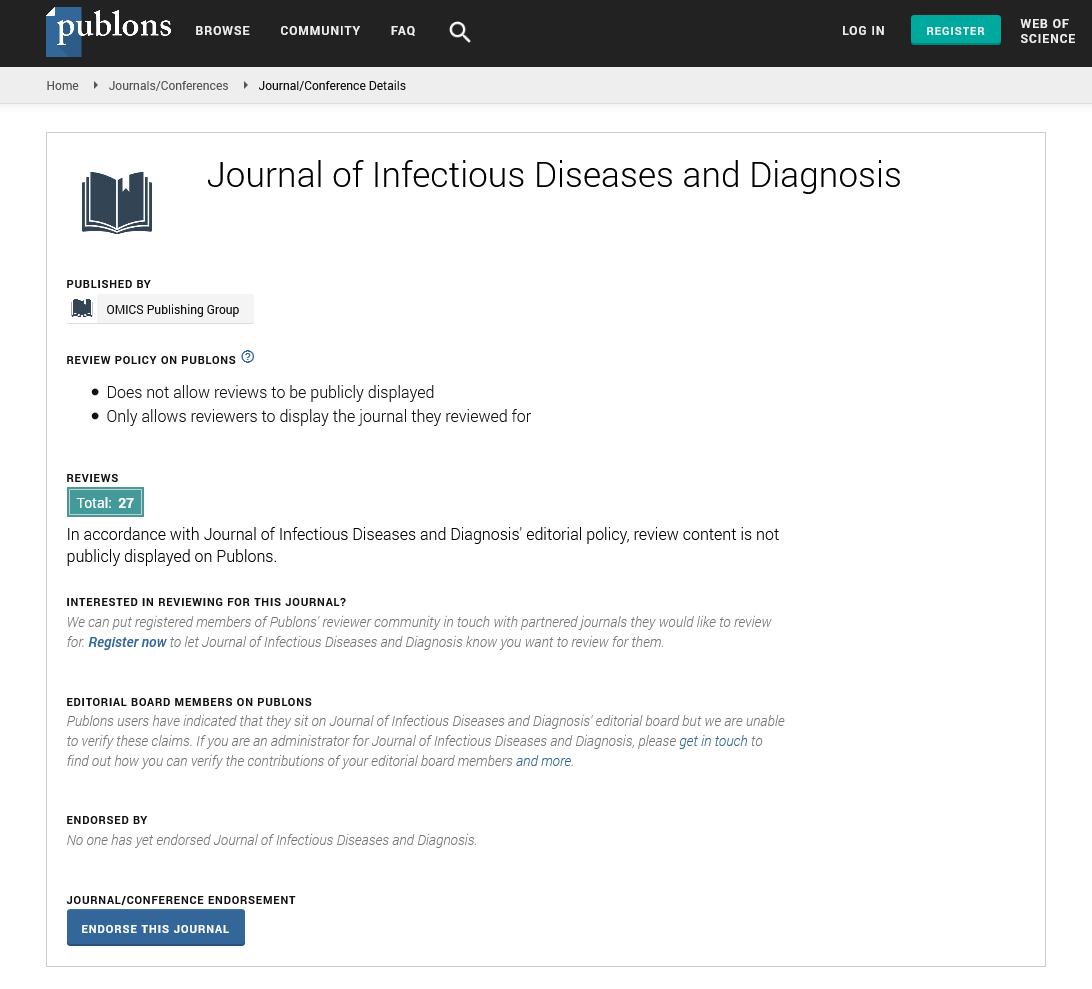Indexed In
- RefSeek
- Hamdard University
- EBSCO A-Z
- Publons
- Euro Pub
- Google Scholar
Useful Links
Share This Page
Journal Flyer

Open Access Journals
- Agri and Aquaculture
- Biochemistry
- Bioinformatics & Systems Biology
- Business & Management
- Chemistry
- Clinical Sciences
- Engineering
- Food & Nutrition
- General Science
- Genetics & Molecular Biology
- Immunology & Microbiology
- Medical Sciences
- Neuroscience & Psychology
- Nursing & Health Care
- Pharmaceutical Sciences
Nanomaterial based biosensor for detection of infectious diseases
2nd International Conference on Microbial Pathogenesis & Infectious Diseases
February 18-19, 2022 | Webinar
Elham Sheikhzadeh
Ferdowsi University of Mashhad, Iran
Scientific Tracks Abstracts: Jour of Infec Dise & Diag
Abstract:
Infectious diseases are a potential risk for public health and the global economy. Fast and accurate detection of the pathogens that cause these infections is important to avoid the transmission of the diseases. Conventional methods for the detection of these microorganisms are time-consuming, costly, and not applicable for on-site monitoring. Biosensors can provide a fast, reliable, and point of care diagnostic. Nanomaterials with specific electrical, optical, magnetic, chemical and mechanical properties have been found effective application in many areas including biosensors or chemical sensors, diagnostics methods, drug delivery, energy harvesting, and tissue engineering. Electrochemical and optical biosensors have been explored for infectious diseases. Magnetic nanoparticles, nanoparticles with peroxidase-like activity, gold nanoparticle and quantum dots extensively have been effectively in electrochemical biosensor used for the detection of infectious diseases. Magnetic nanoparticles are commonly used in rapid assays to capture the targets from crude samples before detection. The use of these not only allows to pre-concentrate the analyte but also to reduce interferences that lead to an increase in the sensitivity and specificity of the sensors. Nanoparticles with peroxidase-like activity are an attractive alternative to enzymes in immune assays resulting in more stable and cost-effective sensors. Gold nanomaterials have been widely used in electrochemical sensors due to biological compatibility, electrical conductivity, the high surface-to-volume ratio. Gold nanomaterials are among the most used material in colorimetric detection. The different detection approached based on Au nanomaterials can be classified into three “groups”: (i) approaches based on aggregation/disaggregation, (ii) approaches based on catalytic properties of the Au nanomaterials, and (iii) growth of hybrid nano-materials. Visual detection can be enhanced by the catalytic activity of nanomaterials to a chromogenic substrate like 3,3, ʹ5,5ʹ-tetramethylbenzidine (TMB). A variety of fluorescence nano-materials such as metal nanoparticles, quantum dots (QDs), carbon dots (CDs), graphene oxide, dye-doped silica nano-beads, nanotubes, and upconversion nanoparticle have been explored in fluorescence biosensor. Nanomaterials like noble metal colloids, nanospheres, core-shell, goldcoated magnetic nanoparticle, nano aggregates, and bimetallic nanomaterial have been reported as promising materials for SERS detections using both labels (indirect) and label-free (direct) approaches. Lateral-flow immunoassay (LFIA) tests are simple, rapid, and portable systems which enable qualitative, non-invasive point of care detection (POC) with wider applications in medical diagnostic. Conventional LFA system suffers from low sensitivity; nevertheless, in recent times several approaches for the improvement of LFA have reported based on using various nanomaterials like QD, UCNP, peroxidase-like nanoparticle, and graphene oxide.
Biography :
Elham Sheikhzadeh is a Professor in Ferdowsi University of Mashhad, Iran. His research interest includes electrochemical sensors due to biological compatibility, electrical conductivity, the high surface-to-volume ratio and Gold nanomaterials.

